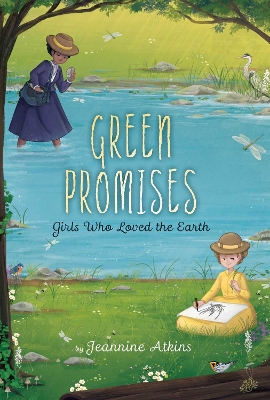Girls Who Love Science
1 total work
Meet three remarkable women who followed their dreams and paved a path for women in science in this gorgeously written biographical novel in verse from acclaimed author Jeannine Atkins.
As a girl in the late 1800s, Mary Agnes Chase searched the river’s edge for wild grasses, wondering how best to capture their likeness with pencil and paper. While her formal education ended in eighth grade, her skill at drawing plants helped land her a position at the Smithsonian Institution. Agnes became a world-renowned expert in grasses she discovered in meadows and mountains.
Far away on the bank of another river, Marguerite Thomas Williams waded in to explore the rocks, wondering what secrets they might tell of long ago. Marguerite became a schoolteacher, then a teacher of teachers, but she wanted more. At last, a nearby university opened its doors to Black women, and after years of study, Marguerite became the first Black woman to earn a PhD in geology.
Marguerite’s student Sophie Mack Lutterlough’s lifelong interest in insects led to her working her way from being an elevator operator at the Smithsonian Institution to becoming one of the first Black women researchers there in the late 1950s.
With keen eyes and ambition, each woman followed her love of the natural world to blaze a trail for future female scientists.
As a girl in the late 1800s, Mary Agnes Chase searched the river’s edge for wild grasses, wondering how best to capture their likeness with pencil and paper. While her formal education ended in eighth grade, her skill at drawing plants helped land her a position at the Smithsonian Institution. Agnes became a world-renowned expert in grasses she discovered in meadows and mountains.
Far away on the bank of another river, Marguerite Thomas Williams waded in to explore the rocks, wondering what secrets they might tell of long ago. Marguerite became a schoolteacher, then a teacher of teachers, but she wanted more. At last, a nearby university opened its doors to Black women, and after years of study, Marguerite became the first Black woman to earn a PhD in geology.
Marguerite’s student Sophie Mack Lutterlough’s lifelong interest in insects led to her working her way from being an elevator operator at the Smithsonian Institution to becoming one of the first Black women researchers there in the late 1950s.
With keen eyes and ambition, each woman followed her love of the natural world to blaze a trail for future female scientists.
